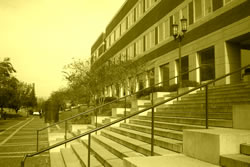|
|||||||
|
|
|
Home |

|
July 24th: Introduction to Research Chapter 8: Reports and Other Such Fun Chapter 8 basically stresses the need to understand audience and purpose for particular types of reports. Of course, reports are industry specific, so we need to be careful about generalizing. However, there are important components of the chapter that can be generalized as effective types of technical communication. Some questions
Research Discussion Introduction Here's what I propose for our research discussions:
What is research? Why do it? Why is it something people devote their lives to? What does it mean to research a topic? Where do you start? When do you stop? How do you come to a conclusion? Do you or should you come to a conclusion? I know what you're thinking: "Hold on! Can't you just tell us what to do?" Well, I could, but where's the fun in that? As a class, let's think about how we've researched and been told to research in the past. Think about the research assignments you've done for other classes (in high school or college). What were their purposes, and how did you create a research "paper" or final project? How do we make knowledge? How do we take data and make it information? Let's consider those questions as we explore epistemology. Are all sources equal? What makes a source credible or not so credible? Below are the names and descriptions of some types of sources you may encounter:
Keep Up with the Syllabus Tomorrow (7/25) we'll continue with our Research discussion, and your Set of Instructions assignment is due.
.. |
||||||||||||||||||||||||||||||||||||||||||||
|
|
|||||||||||||||||||||||||||||||||||||||||||||
| © UNC Charlotte Copyright | Privacy Statement | Page Maintained By: Aaron A. Toscano |
